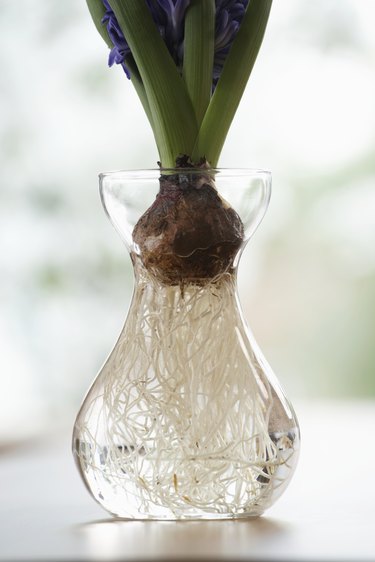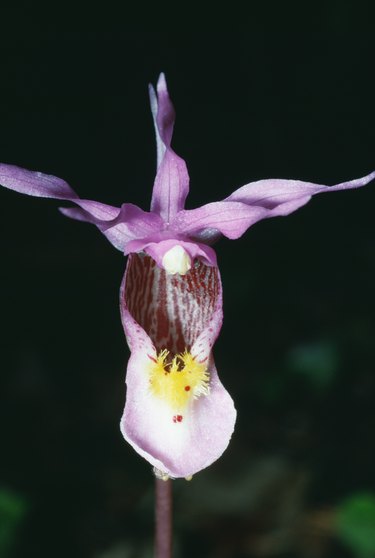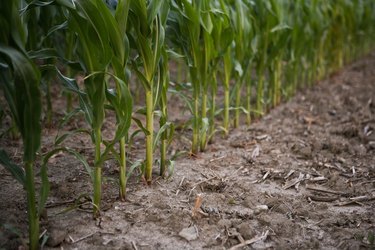
The Online Dictionary of Botanical Terminology defines a fibrous root as "a fine root or rootlet which absorbs moisture and nutrients from the soil." In a fibrous root system, the primary and lateral roots are finely divided and roughly equal in diameter. No central root is larger than the rest, as is the case of a plant that has a tap root. The roots of most plants are fibrous.
Monocots
Video of the Day
Most plants that have one embryonic seed leaf are commonly known as monocots and have fibrous roots. The roots form a thick mass just below the surface of the soil and effectively anchor the plant in place. The root network is very good at absorbing water and minerals from the soil and anchoring the soil to prevent erosion. Native grasses, sedges, rushes and several wildflowers feature fibrous roots. Many common weeds also have fibrous root systems.
Video of the Day
Weeds
Fibrous roots make weed eradication difficult because it is difficult to kill unwanted plants without digging out the entire root structure. Weeds with fibrous roots may be broadleaf or grassy in nature. Broadleaf weeds with fibrous roots include the prickly ash, chickory, purple loosetrife, stinging nettle and poison sumac. Grassy weeds with fibrous roots include bristly foxtail, foxtail barley, barnyard grass, crabgrass, wild oats, goose grass, downy brome and timothy.
Aerial and Contractile Root Plants

Fibrous roots may be subdivided into various specialties according to where and how they grow. Monocots belonging to the orchid family have aerial roots. These fibrous roots grow above the soil in order to retain water and perform photosynthesis. Plants that contain bulbs or corms, such as the lily or gladiolus, have fibrous contractile roots that pull the plant downward into the soil to protect the bulbs from being eaten by scavenging wildlife such as squirrels or chipmunks.
Haustoria and Prop Root Plants

The watchweed and broomrape are parasitic weeds that feed off other plants by sending their fibrous roots into the nearby roots of their host plants. These specialty fibrous roots are designated as haustoria. Corn plants develop fibrous prop roots that begin as aerial roots arising from the stem. The aboveground roots later sink into the soil to provide additional stability and support to the growing corn stalks, preventing their collapse in inclement weather and windy days.